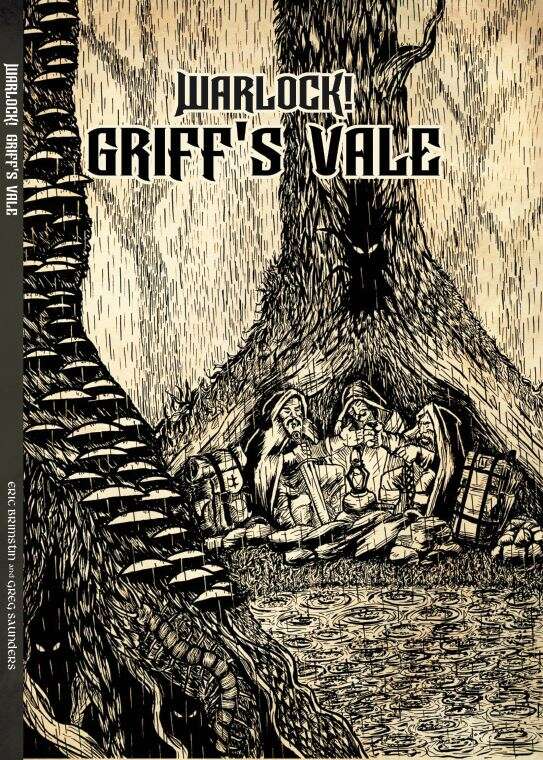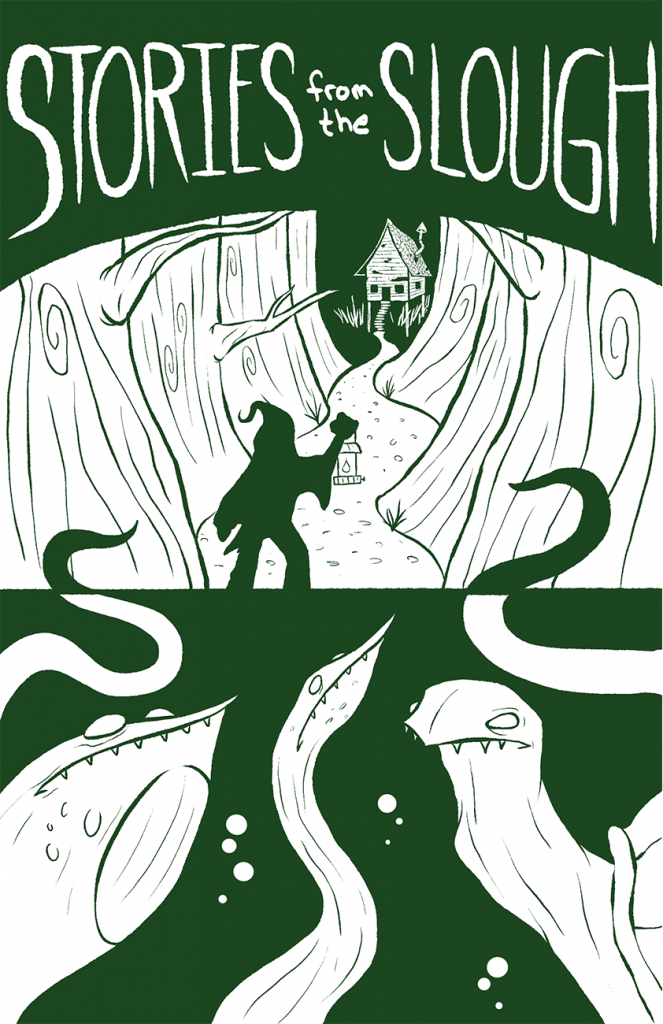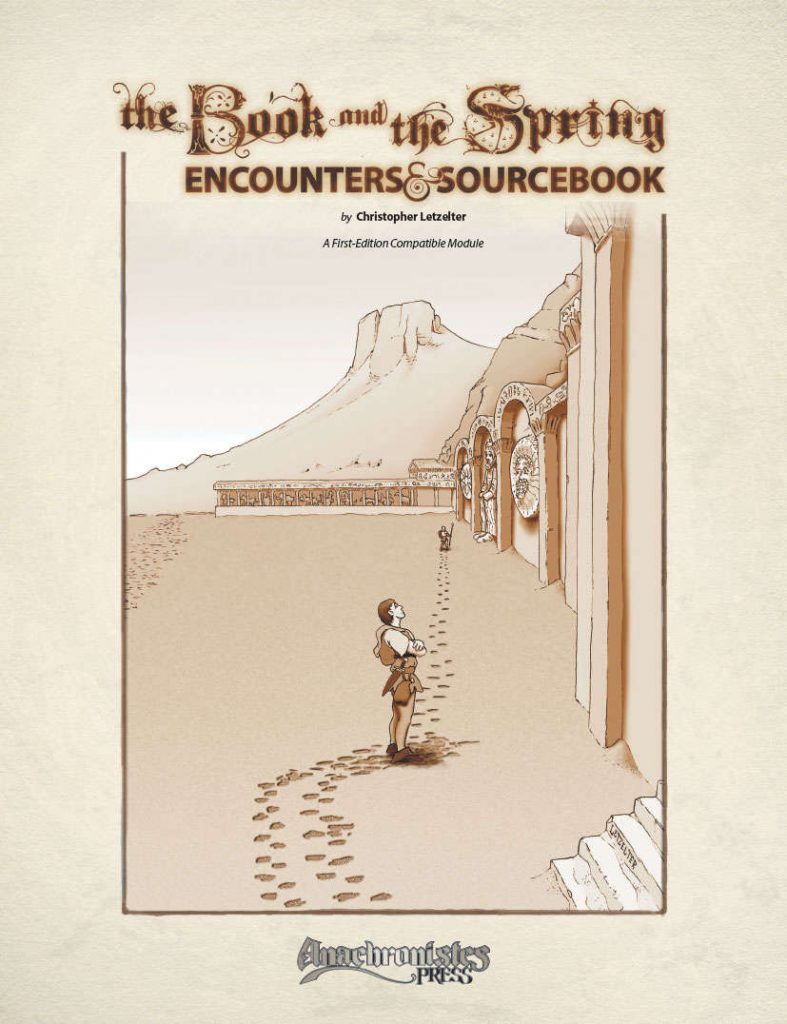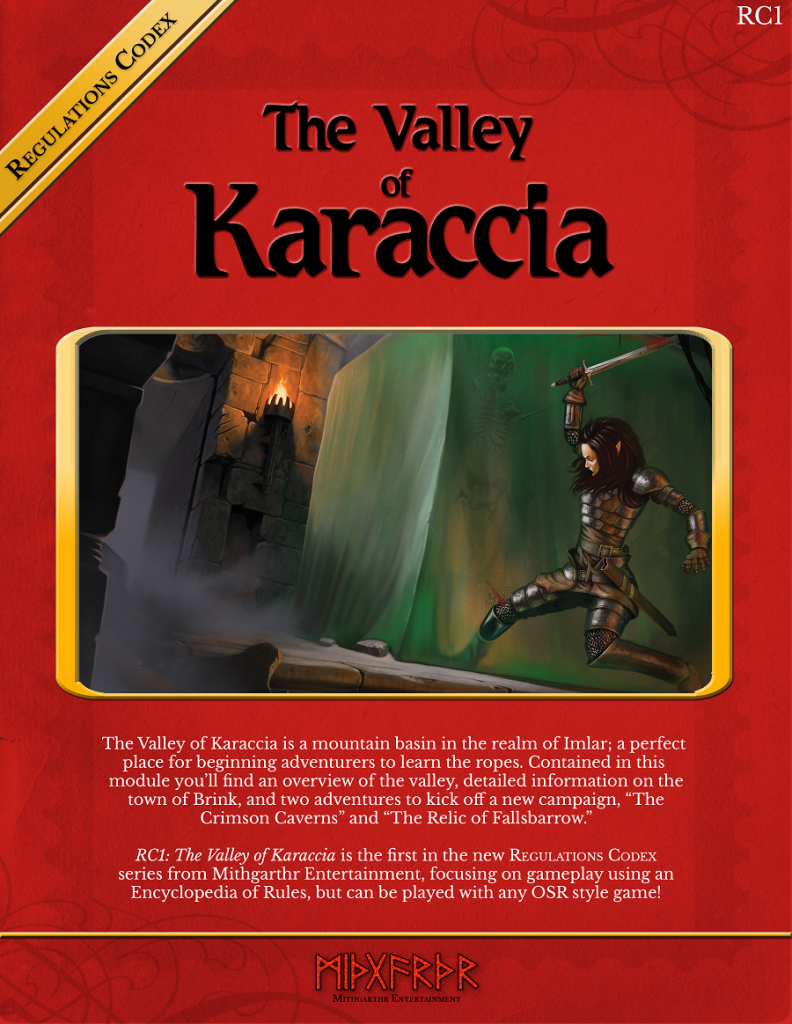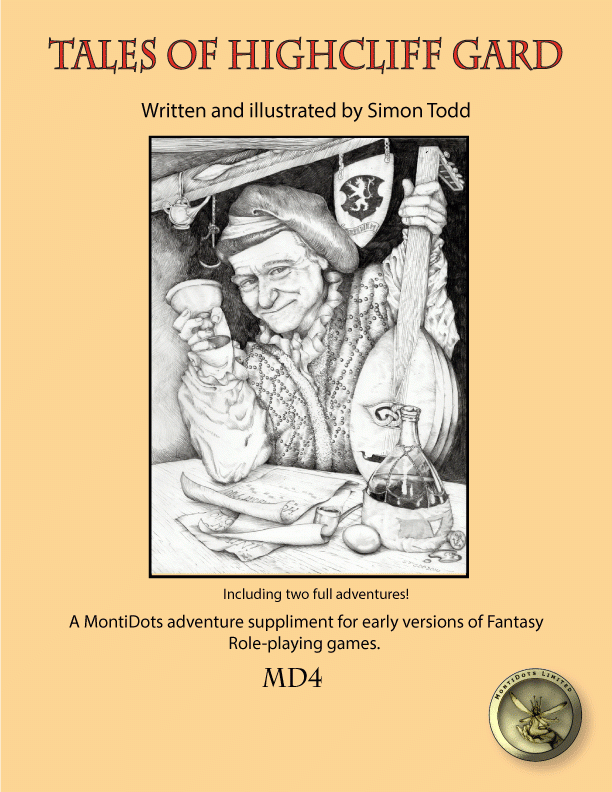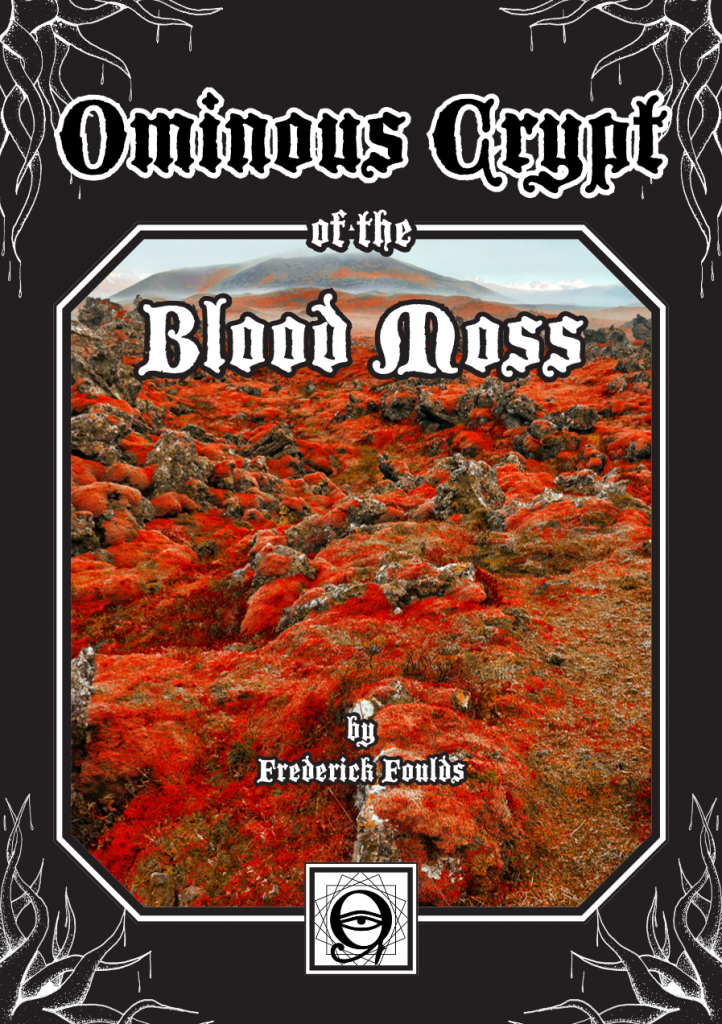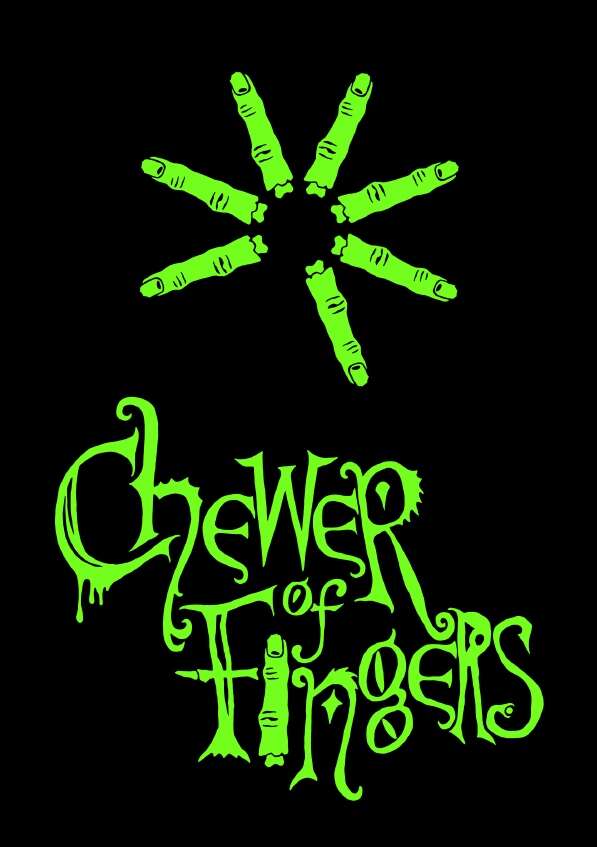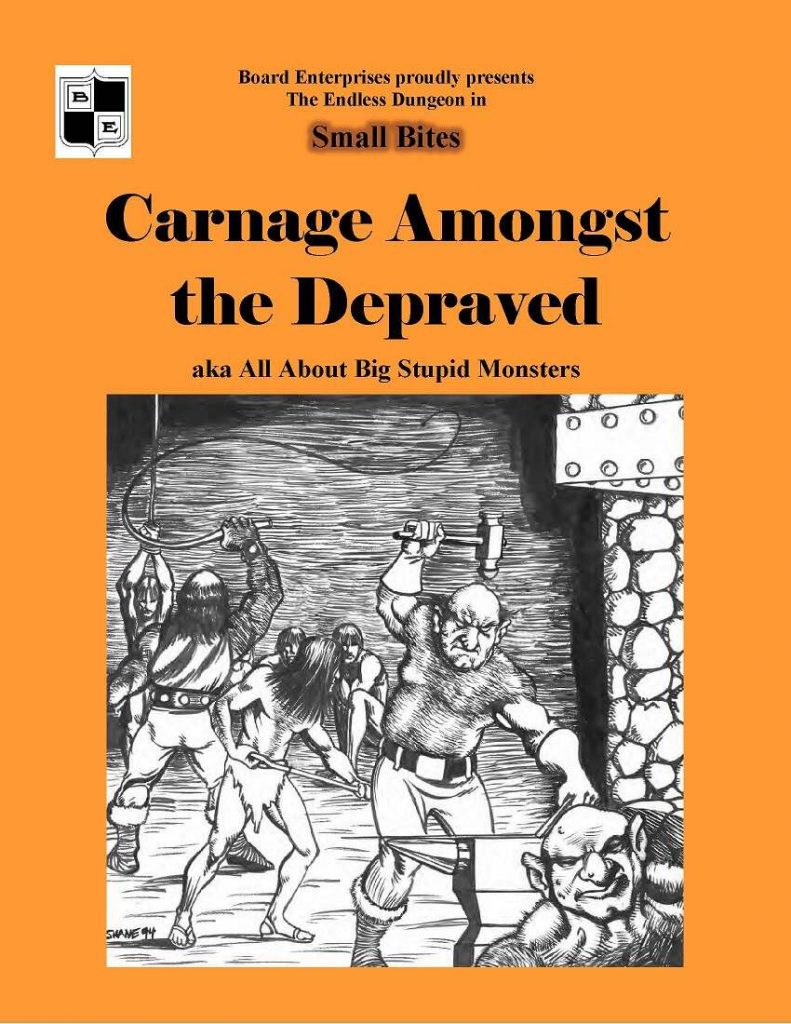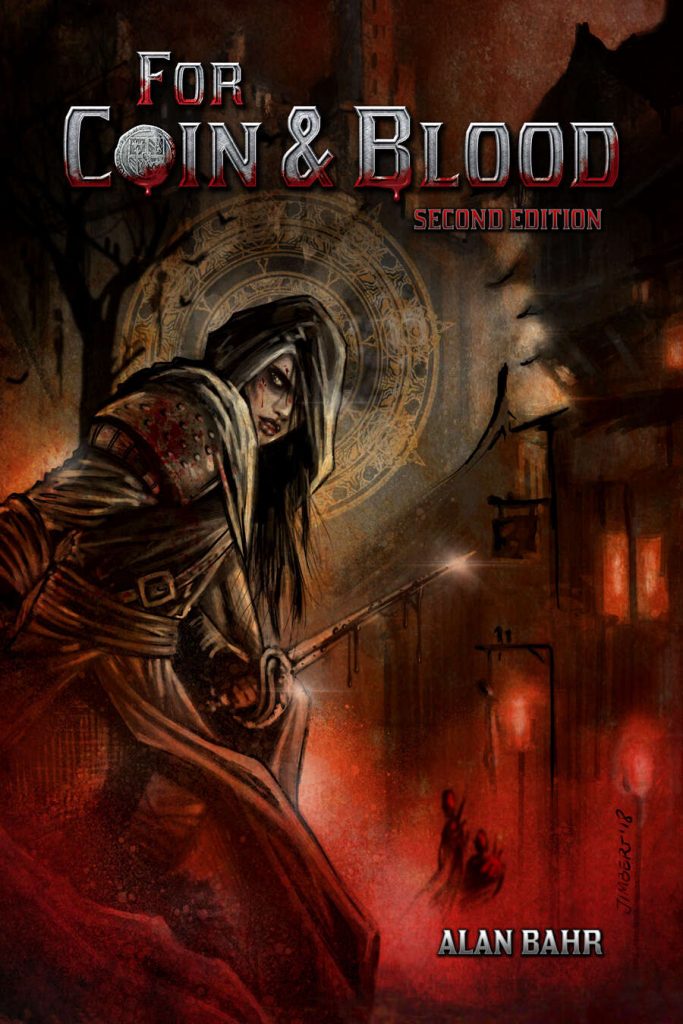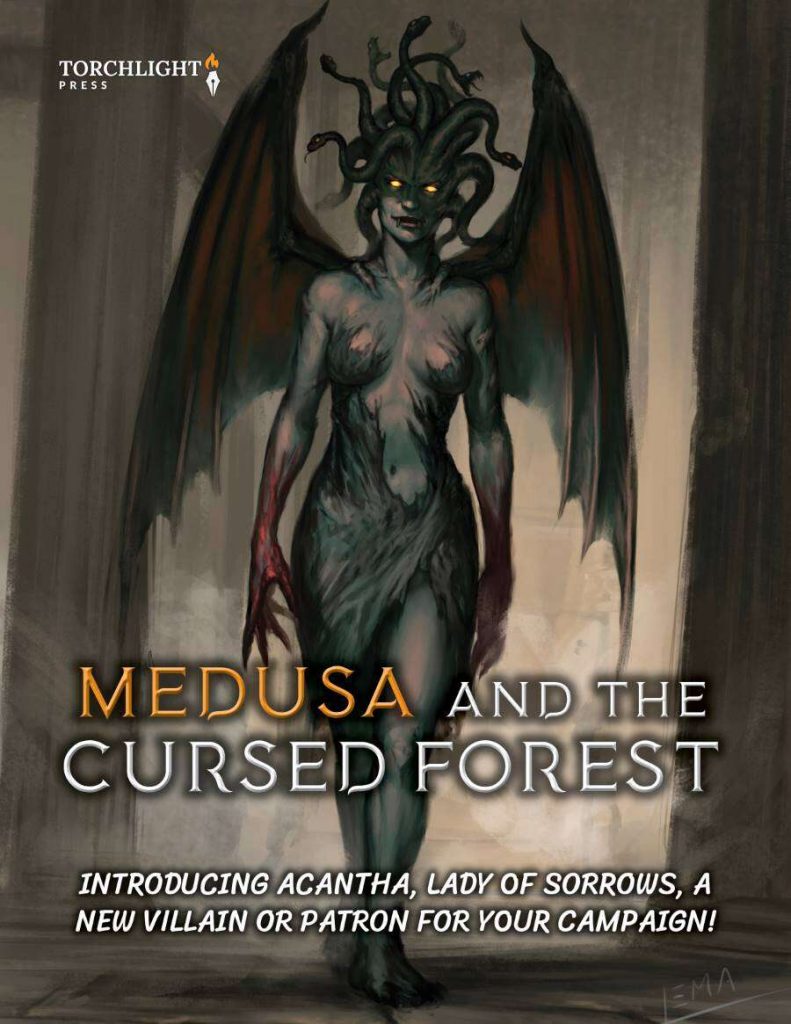
By Addison Short Torchlight Press 5e Levels 10-11
Once a faithful young acolyte to a goddess of war, Acantha tended to her god’s temple diligently and without protest. One fateful evening a rival god appeared and wrought destruction on the temple. Rather than take pity on Acantha, her goddess cursed her with the powers she is now feared for: her petrifying gaze and the mass of writhing snakes that protrude from her head. Little known, however, is that the curse also bound her life to the broken temple; if she strays from it for too long, she grows weak and begins to die.In the millenia since she was cursed, her presence has imbued the surrounding forest with its own petrifying magic. Creatures that enter the depths of the forest risk being turned to stone by the latent magic and for each creature petrified, the forest grows further outward. Now, Acantha is known as the Lady of Sorrows.
This 34 page adventure details a petrified forest and with a ten room temple at the center containing an ancient medusa. It has some good ideas for putting the medusa in to the context of the larger game world, but really doesn’t know what it wants to be when it grows up, never going fully down any path. The results are a muddled mess that takes a great concept and comes off as generic.
This thing has four different elements to it, and doesn’t fully go down the path of any one of them, or, perhaps, use any one of them effectively, much less using all four effectively. You’ve got “the medusa in the larger context of the region”, “the medusa’s petrified forest”, “the temple of the medusa at the center of the forest” and “the medusa’s allies.” Each of these, individually, has some interesting ideas (well, except maybe the temple) but they are just surface level concepts, not going far enough and not working together.
What sucked me in to this product in the first place is the medusa in the larger context. Let’s think of this as THE medusa, and, in fact, this medusa’s origin is much like the mythical one, cursed by a god. The forest is a mythical place. This isn’t just a medusa that shows up as a random encounter, one of many, inside of a cave complex. This is HER place in the world. The people know about her. They know about the forest. It’s a thing for people. And, there;s notes on her actions in the wider world. Outlying farms getting visits from her, a kind of protection thing, which is either a racket or beneficial, depending on how youplay the medusa. Her showing up at some nobles party, all Sleeping Beauty style, to fuck with people. Longer plans, like her minions raiding a village to forcibly disasm the village. But it doesn’t do anything with any of this. It’s not a coherent narrative. Rather than picking one , or two, and going with it, instead it’s just a couple of sentences thrown at the DM. “Do what you want with this concept.” This is a SEVERELY missed opportunity. A mythical creature in a mythical place with plots? That would be GOLD, but it’s not handled well here at all, and given no life or room to grow.
The forest. Petrified. Full of statues, etc. Slowly expanding as more and more animals and people get petrified. It’s cut off a village awhile ago and now they are isolated from the rest of the kingdom. All super good. Nice concept. Terribly handled. The forest has two things going on. First, if you kick up a dust cloud you get to save to turn to stone in a few days. Also, dust storms randomly swirl around at times, especially during encounters. There’s no way mentioned to cure the “flesh to stone” infection. During a dust squall it’s noted that a cloth over the face keeps you from having to make a save … but not during general travel? There’s an entire page devoted to the dust storms, inhaling the dist, etc, and these sorts of very basic are never mentioned. Further, it feels punitive to me. Much like heat and cold rules, it feels like torture to play in it. And, when you get to the temple, your “make a saving throw every day or the disease progresses” changes to “make a saving throw every turn.” Fuck me man. And then the encounters are … strange? Each takes about a column, for a VERY basic encounter in most cases. There are two tables, one of which I don’t think is ever used and has ten entries on it and “roll a d4” noted. Fuck if I know what this table is for. The other is athe “traveling through the forest” table with the encounters getting a column each. There are no set encounter locations in the forest, just wander the fuck around in it having these random encounters and making saving throws to not die untli you reach the somewhat random hex with the medusa’s temple in it. (Admitidadly, in the center of the zone, but the players don’t know that and don’t know how big the place is so they won’t know which hex is the center.) This is all pretty fucking terrible design. Again, nice concept, but “wander the death zone having random encounters” is not an adventure. What this needed was some fixed locations, with the NPC’s scattered about.
And NPC’s there are. A treant with no home forest to guard anymore because it was logged out. A hag with a bunch of orphan children. The invisible snake that likes silver tableware. Not bad. Maybe we can ever count a tribe of trolls that serve the medusa. But, as NPC’s, they are all just stuffed in to the ten room temple. Any subplots or interesting encounters will have to happen there, perhaps in the context of a fight. They have no room to breathe and nothing interesting going on within the context of the adventure (more on their role in the larger context later.)
And the medusa’s tempe is boring as all fuck. The descriptions are essentially non-existent. Which, I guess, makes sense in a way, maybe? I mean, It’s not an exploratory location. You either talk to her or stab her. But I just can’t get over the lack of any meaningful detail. “An alter devoted to the god of war cracked down the middle.” Well, fuck, that’s certainly a great description for the fucking thing that started the entire ordeqal of medusa in the first place, isn’t it? And the cleaning closet is one of the ten rooms. What the fuck? Seriously? Along with the outhouse. With a bucket to put the excrement in to fertilize the garden. This is what you devote pages to in a ancient cursed medusa’s temple? And the creatures/allies just sit in their locations if you start stabbing her, I guess, since there’s no notes on this outcome.
And now we must deal with the elephant. There is an attempt to make the various major NPC’s more well rounded. A ham-handed attempt that amounts to “DRAGON GOOD. PRINCESS BAD. HUR HUR HUR.” Let’s be clear, I really like a complex social environment, including the “monsters.” I think it offers much more rewarding play than just having everyone and everything attack outright when they see the party. But I’ve got my limits. The medusa has grown increasingly impatient with the greed and cruelty of the humanoid kingdoms over the millenia.” Uh huh. Says the chick you turns people to stone. Cue the South Park “It was coming right at me!” schtick. The treant advisor/friend whos forest was cut down by the human kingdom. The NE hag who doesn’t eat children and instead rescues orphans from the forest to raise them. Uh huh. Or hooks that involve rescuing the women children and elderty from a village that are in danger. Uh huh. There’s a passing attempt to create “were allied with the medusa” the medusa relationship to us is neutral” and “stabbing the medusa” hooks, but, in reality, this is just stabbing the medusa. Otherwise there’s not really an adventure here, it’s just a patron. Ph, oh! The stabbing the medusa hook? You’re hired by the Lord to go do it. And if you do he fucks you over by giving the worst hex in the petrified forest as your domain. This sort of ham-handed shit doesn’t fly. It doesn’t when the monsters are all psychos and it doesn’t when we turn the tables and make them the good guys and the humans all evil. And it oesn’t matter how many encounters there are like “flocks of birds turn to stone midair and rain down” there are. The inability to give the major NPC’s more than a single dimension, either direction, destroys the ability to create a lager game context for the party to enjoy and/or exploit.
Discounting this ham-handedness though, the other parts of the adventure are extremely weak both as stand-along elements and in the way that they should be working together to create a larger context for adventuring. The surrounding area stuff is a throw-away. The wilderness has no depth. The NPC’s have no room to experience them. And the temple is a disaster of “Nothing going on but boring.” But, in concept, each one of those is great! Yes, even the ham-handed shit. This are great ideas … that jts did NOT make it in to execution in any way shape or form beyond “I have a good idea …”
This is $7 at DriveThru. The preview is the entire thing which is GREAT. I would suggest taking a look at the forest few tables. They will general the general vibe of the product, as well as the missed potential.
https://www.drivethrurpg.com/product/356517/Medusa-and-the-Cursed-Forest?1892600
This has been episode “A pernod at 7:30am sounds like a good idea to me” of Bryce reviews everything on his wishlist.

